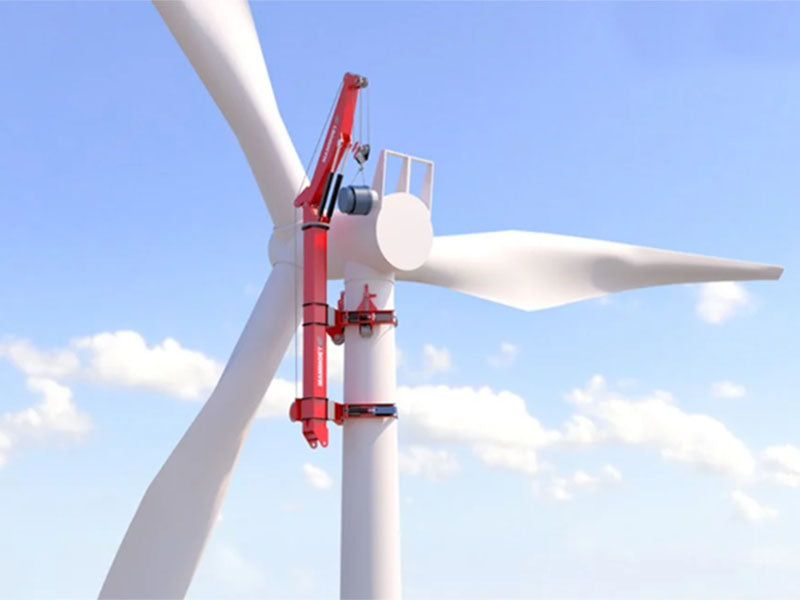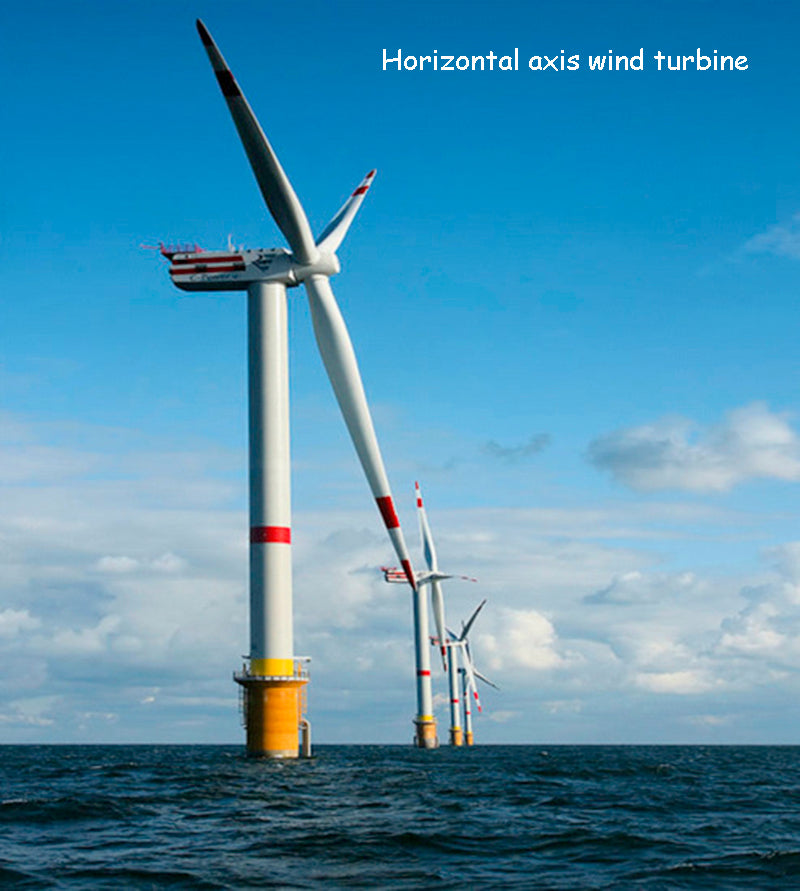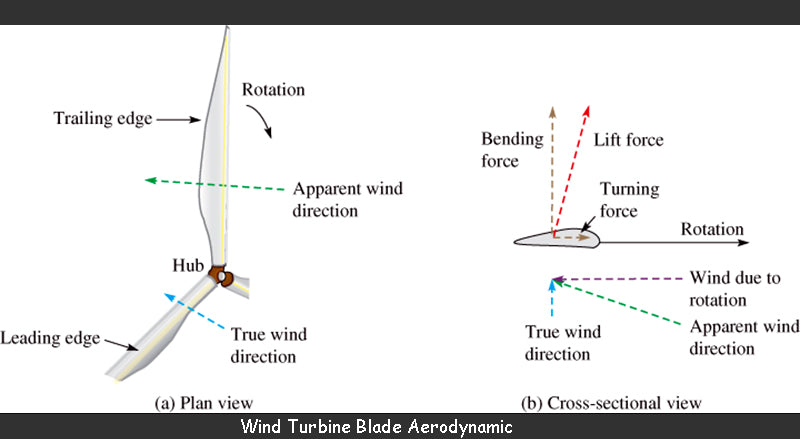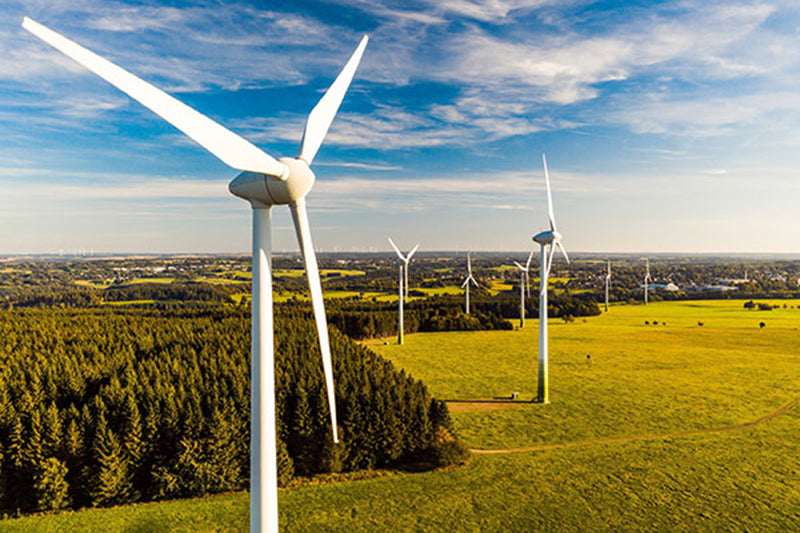
Main content:
Although there are many kinds of wind turbines, wind turbines can be divided into two categories: one is the horizontal axis wind turbines, the rotation axis of the rotor of this type of wind turbines are parallel to the wind direction; the other is the vertical axis wind turbines, this type of wind turbines. The rotation axis of the wind wheel of the machine is perpendicular to the ground or the direction of the airflow.
1. Horizontal axis wind turbines
Horizontal axis wind turbines can be divided into two types: lift type and drag type. It has an anti-wind device, which can rotate with the change of the wind direction. For small wind turbines, a tail rudder is used for this wind device, while for large wind turbines, a transmission mechanism composed of wind direction sensing elements and servo motors is used.
The wind turbines with the rotor in front of the tower are called upwind wind turbines, and the wind rotor behind the tower is called downwind wind turbines.
There are many styles of horizontal axis phoenix machines, some have wind rotors with reversing blades; some install multiple wind rotors on a tower to reduce the cost of the tower under the condition of a certain output power; some use cones The hood can concentrate or diffuse the airflow when it passes through the horizontal-axis wind rotor, which can accelerate or decelerate; some horizontal-axis wind turbines generate vortices around the wind rotor to concentrate the airflow and increase the airflow speed.

2. Vertical axis wind turbines
The vertical axis wind turbines don't need to face the wind when the wind direction changes, which is a big advantage compared to the horizontal axis wind turbines. It not only simplifies the structure design, but also reduces the gyro force when the wind rotor is facing the wind. There are several types of axial wind turbines. Among them, there are wind wheels made of flat plates and cups, which are pure resistance devices; S-type wind turbines have partial lift, but are mainly resistance devices. These devices have larger starting torques, but lower tip speeds, and provide lower power output for a given rotor size, weight and cost.
The Darrieux-type wind turbines were invented by French G.J.M. Darrieu in the 1830s. In the 1970s, the National Academy of Sciences of Canada conducted extensive research on these wind turbines. Darieu-type wind turbines are now the main contenders for horizontal axis wind turbines.
A Darrieu-type rotor is a lift device, and the profile of the curved blades is an airfoil. It has a low starting torque, but can have a high tip speed ratio, and has a higher output for a given rotor weight and cost. There are now a variety of Darieu wind turbines, such as medium, delta and Y shape etc. These rotors can be designed as single-blade, double-blade, triple-blade or multi-blade. In my country, the Darieu wind turbines generally adopt three blades.
Other forms of vertical axis wind turbines include the Megalos effect rotor, which consists of a spinning cylinder. When it works in the airflow, the generated moving force is caused by the Megalouse effect, and its size is proportional to the wind speed. Become vertical to increase speed; some also use solar energy or burn some kind of fuel to make horizontal airflow into vertical airflow.

3. Aerodynamic basis of wind turbines
The wind turbines generator set is mainly a wind wheel that uses aerodynamic lift. Aerodynamic lift is a force produced by the wings of an aircraft.

Now do a lift and drag test of a wind turbine. Extend a board out of a moving car and hold only one end of the board, the windward side of the board is called the leading edge. Turn the leading edge up a little and you will feel an upward lift, and if the leading edge is a little down, you will feel a downward force. Between the upward and downward lift, there is an angle that does not produce lift, called the zero lift angle.
At the position of zero lift angle, there will be very little resistance, and the resistance will pull the board backward, so that the board is 90°, and the leading edge is upward. At this time, the resistance has been greatly increased. If the car is going very fast, the board may blow out of your hands.
Lift and drag are generated at the same time. The leading edge of the board is slowly turned upward from the zero lift angle. At the beginning, the lift increases and the drag increases, but the lift increases much faster than the drag; after a certain angle, the lift increases. There is a sudden drop, but the drag continues to increase. The angle of attack is the angle between the blade inclination and the horizontal direction of the flow of wind in Darieu vertical wind turbines. The angle of attack at this time is about 20°, and the wing at this time will stall.
At certain theoretical angles, lift is much larger than drag, and lift is the driving force for designing high-efficiency wind turbines. The high lift area and low drag area of the airfoil are very important to the design of wind turbines.
The power axis of the Darieu vertical axis wind turbines are perpendicular to the wind direction. The sailboat can do circular motion, but when sitting on the sailboat, you can see that the sail is affected by the wind on one side at the beginning, and makes a bending motion. The Darrieu wind turbine works on the same principle.

For horizontal axis wind turbines, lift always pushes the blades to rotate around the central axis. If the wind speed is constant, the magnitude of the lift of the wind turbines are also unchanged. During the rotation of the blades of the Darieu wind turbines, the lift force is constantly changing. In the process of blade rotation, there are two areas where the lift force is very small, one is when the blade moves to the same direction as the wind, and the other is when the blade moves to the downwind direction. At other points during the rotation of the blade, the lift force becomes greater.
Read more: Wind power resources zoning in China
















